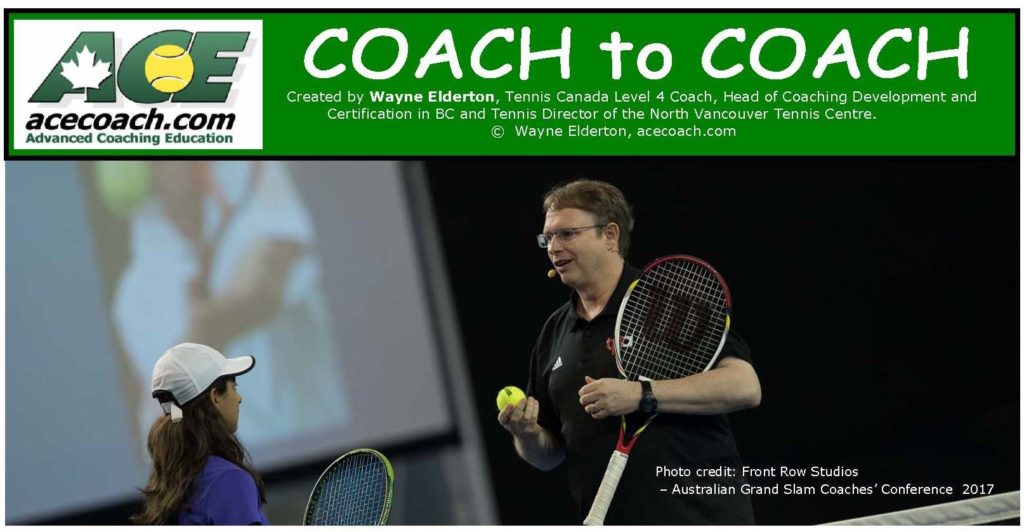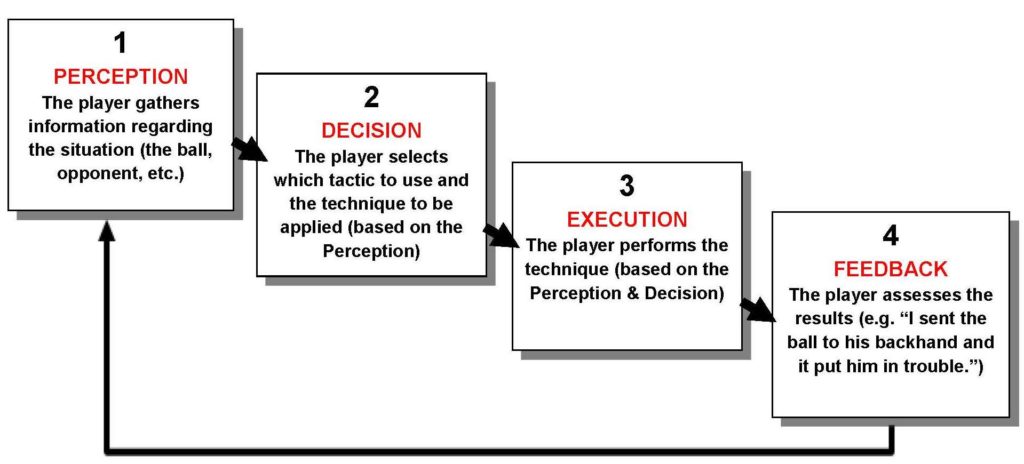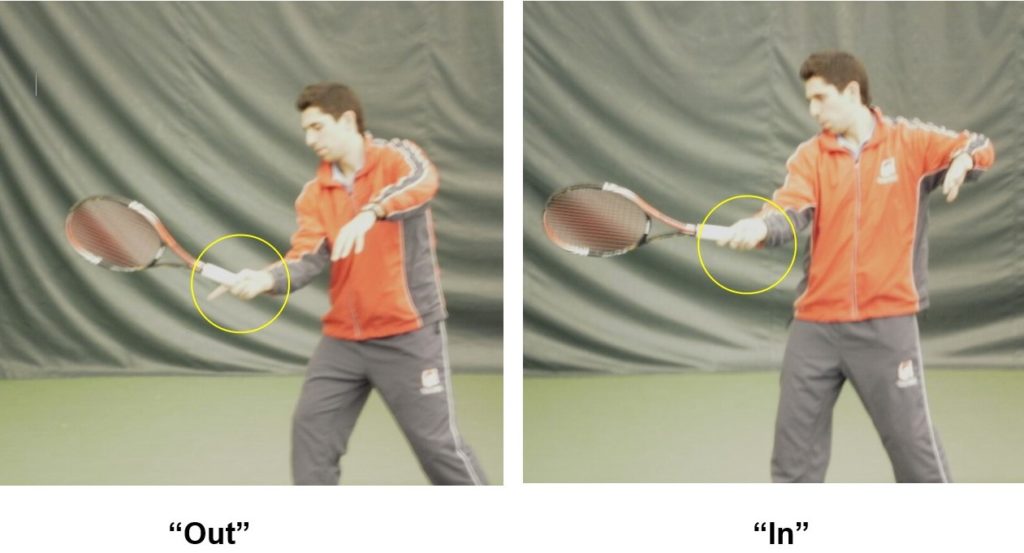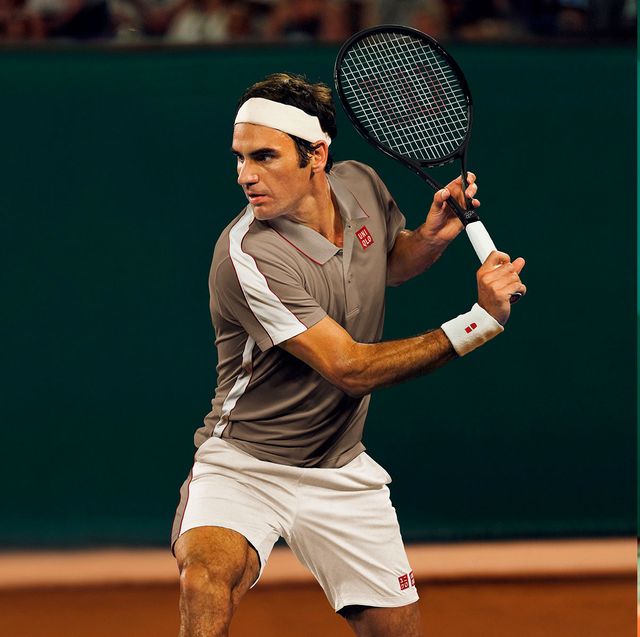
The vast majority of coaches (if not all) would agree that learning solid technique is important to playing tennis successfully. However, most technical coaching ignores a critical component.
Tennis is classified as a “Perceptual motor skill” in motor learning. In other words, successfully applying technique is based on seeing what is going on (with the ball and opponent) and deciding to adjust accordingly. This is in contrast to sports that use more ‘closed skills’ that don’t require skills to be adapted to the situation (e.g. gymnastics or diving). Moving correctly is the only priority in closed-skill sports, so coaching them uses a different process.
WHAT YOU SEE IS WHAT YOU GET
In tennis, movement isn’t ‘correct’ unless it is adapted. For example, a player must adjust their forehand technique if :
- The ball received is: higher or lower, faster or slower, makes you move or ‘jams’
you, has spin, etc. - The player’s location changes (a ¾ court FH shot from the side of the court
uses different technique than a FH shot hit deep from the centre) - The intention changes (the player is in a Neutral, Offensive or Defensive Phase
of Play)
If one does the quick math, that is over 240 possible adaptations that must be made (just to a FH Groundstroke) to execute a successful shot. It is obvious tennis uses ‘open skills’.
Even though this critical adaptation process is required for every shot in tennis (except the serve), the necessary skills are typically woefully ignored or under-taught. Not identifying the characteristics of the ball received means the shot will not be adapted correctly to gain the desired result.
THE OPEN-SKILL PROCESS
In the 1980s, then-Canadian Head National Coach Louis Cayer systemized a method of instruction based on the principles of open skill development. Cayer applied research that revealed that, on every shot, a player goes through four steps of an information processing process.

This revelation implies that tennis needs to include perception training (seeing and ‘reading’ the characteristics of the ball, the opponent, the court, etc.). This type of training is required at all levels since it is the critical first step of the process.
HOW FAR IS YOUR F.A.R.?
The first tool for training perception is what I call your, Focus of Attention Range (F.A.R). The concept is simple. Your F.A.R. is where the information you see registers in your brain enough to cause you to move.
Starter players have a F.A.R. that starts about the service line on their side of the court. They see the approaching ball right from where the opponent hits it; however, nothing registers until the ball is about to bounce, and then they react. Of course, this is a generalization, and players who are good athletes and have successfully played other sports can have a more developed F.A.R.
Intermediate
players have a F.A.R. that starts around the net. It is like the ball they see is in a fog. When the ball emerges from the fog, it registers with them to react.
An advanced player has a F.A.R. that includes the opponent on the far end of the court. They pick up relevant clues right from the opponent’s impact of the ball.
An elite player has a F.A.R. that encompasses the opponent but also includes gathering clues to anticipate the characteristics of the opponent’s shot.

The way to determine a player’s F.A.R. is to observe from behind the court. When the opponent hits the shot, take note of when you see the player start to move. When they move, take a mental ‘snapshot’ of where the ball is. This is their F.A.R.
The goal is to help them quickly shift their attention to the other end of the court after they hit a ball to their opponent. With some training, even a starter player can have an advanced F.A.R.
For performance players, physical trainers spend hours just for minimal gains in speed. Helping players react earlier can lead to significant improvements in play.
2 TYPES OF PERCEPTION
When training perception, we can separate it into two types:
- Ball-Based Perception: Reading the
characteristics of the ball (e.g. It’s direction, height, distance, speed &
spin)
- Opponent-Based Perception: Reading the
actions and characteristics of the opponent
Winning in tennis rests on effectively interacting with these critical variables. The first one to master is ball-based perception. Any clues we can get about what the ball will do pays big dividends for getting into position early.
CRITICAL PERCEPTION TRAINING TOOL-CUE WORDS:
The obvious challenge with training perception is that it is an internal process for the player. How can the coach know the player has perceived appropriately? The number one tool a coach can use is ‘Cue Words’. By having the player call out loud a cue word attached to the perception, the coach is alerted to how quick and accurate the player’s perception is. For example, when receiving volleys, the player could call out ‘High’ or ‘Low’. Receiving different heights of volleys requires different preparations, so the earlier they occur, the better. By attaching how early the cue is called, the time of the perception can be trained so the players’ F.A.R. is tangibly improved. On the volleys, for example, the player would first call before the ball crosses the net. They then could be trained to call before it crosses the service line on the opponent’s side of the court, and so on. The perception drills listed below all use cue words to enhance training.
I am not talking about anticipation but simply ‘reading’ the ball characteristics. Having said that, reading the ball and focusing attention onto the opponent’s side of the court when they are hitting is the important first step to open the door to anticipation training.
Here are some basic drills that can train perception skills.
BALL-BASED TRAINING DRILL:
- “Where”
Players rally from baseline to baseline. Say the cue word “Where” when the opponent impacts the ball. This represents the question, “Where do I think the ball is going?” At the same time as saying “Where”, perform a split step to prime the reaction to explosively take off to retrieve the ball. This helps players keep their ‘radar’ on ‘high alert’.
This drill also works for volleys and returning serve.
OPPONENT-BASED TRAINING DRILL:
- The Finger
Players rally baseline to baseline. One player is designated the ‘hitter’. They either hit the ball with their regular grip or fully extended their index finger while stroking. The other player (designated the ‘observer’) must call out loud if the opponent’s finger is “out” (extended) or “in” (not extended). For a more advanced version, both players can observe and expose the finger to each other.

If done correctly, this drill will encourage the player to pay close attention to the impact area of the opponent’s racquet, which can lead to gathering relevant clues about racquet angle, grip, etc.
SHIFTING ATTENTION DRILL:
Sometimes, it is the shifting of attention that causes a challenge. It is fine to see the opponent’s impact; however, the ball must be tracked back to their impact as well. Players must repeatedly shift their focus from their impact to the opponent and back again. If the shift doesn’t happen or happens too late, perception (and the quality of the stroke) suffers.
Look out for a player doing these drills without shifting attention back to their impact area. One solution is to modify the “Where” drill.
- “Here & Where”
This is a variation of the classic Timothy Gallwey “Bounce, Hit” drill. It is performed like the “Where” drill, but the player must also say the cue word “Here” when they impact the ball. It is essential to synchronize saying the cue word at the exact moment the ball impacts the strings. This is only possible if the player truly has their full attention on the ball at impact. This synchronization is improved if the player exhales at the moment of impact. Have them exaggerate, saying the word “HHHeeere” to emphasize the exhale.
If a player can say both “Where” and “Here” cues at the appropriate time, they are fully engaged in focusing their attention.
It is important to note that often, at first, the player uses so many resources to say the cues that they feel they can’t even hit the ball. Assure them that attention is critical to performance, and it will become automatic soon enough.
GET AHEAD
One of the elements that prevents players from tracking the ball is inappropriate head movement. Tracking a ball well requires a player’s head to be still and looking forward. When the ball bounces, the head can drop to focus on the impact. Coaches should look for the appropriate head movement when doing these drills. This is especially important when players are running laterally. If their head turns to the side, they will tend to impact on the side rather than in front.

- Head Drills
Put on a baseball cap to help a player keep their head pointing forward. When moving to the side, ensure the cap points to the net.
To help the head be balanced, still and avoid bouncing up and down while moving, balance a folded towel on the head while rallying. (wearing a baseball cap upside down on the head also works).
Eyes & Ears
Visual stimuli are not the only things that provide pertinent information. The sound the ball makes can also give clues as to its speed and spin. Auditory stimulus tends to be more relevant for players at the advanced and above levels.
- Sound Drill
To practice hearing the ball, have the player say “Spin” or “Flat” as soon as the opponent hits it. The player can also say “Fast” or “Slow” when they hear if the opponent’s impact is powerful and solid or weaker.
CONCLUSION
Technical stroke training is not complete unless it includes perception. It is unlikely a player will time their shot appropriately unless they can gather relevant clues about the situation and ball and act on them. Coaches need to include this kind of training to empower players to play the open skill of tennis.
I’m a Professional tennis coach in Chicago IL, and had the privilege to be apart of Louis Cayers teaching seminar in Chicago in the 90s. I have been teaching the Actions Method and had tremendous success with my tennis students.
I also teach Platform Tennis and pickle ball and have introduced the Actions method in my teaching, again been very successful.
At the moment I have a you tube platform tennis video called Paddle Evolution( how to be your own coach) which I’ve introduced the Open Skills method…I want to thank you for the great teaching and information you are providing….would you be able to tell me where I can purchase your teaching books or DVDs…again thank you.
Mark,
Thanks for the comment. My entire acecoach.com site is all about the evolved version of the Actions Approach. Take a look through all the free articles & videos. The ‘Situation Training’ section of articles is how Actions is applied. You can look at the ‘Consulting & Coaching Manuals’ page for some of the e-Learning booklets I have created. All of the information can be applied to any racquet sport.
Keep on applying the methodology!
Hi Wayne,I have just read the above article and I realised how important receiving skills are for beginners juniors and seniors . I had a mixture of lessons yesterday and now from this article have understood there difficulties and challenges!! Thanks so much ,it was freezing cold day outside on the courts in Jersey! So I did alot of movement!! Day 2, and I have read my second article from you ! Will send above to my adult players, and thanks again for another great resource to help coaches and players enjoy the game more ,all the best ian morgan